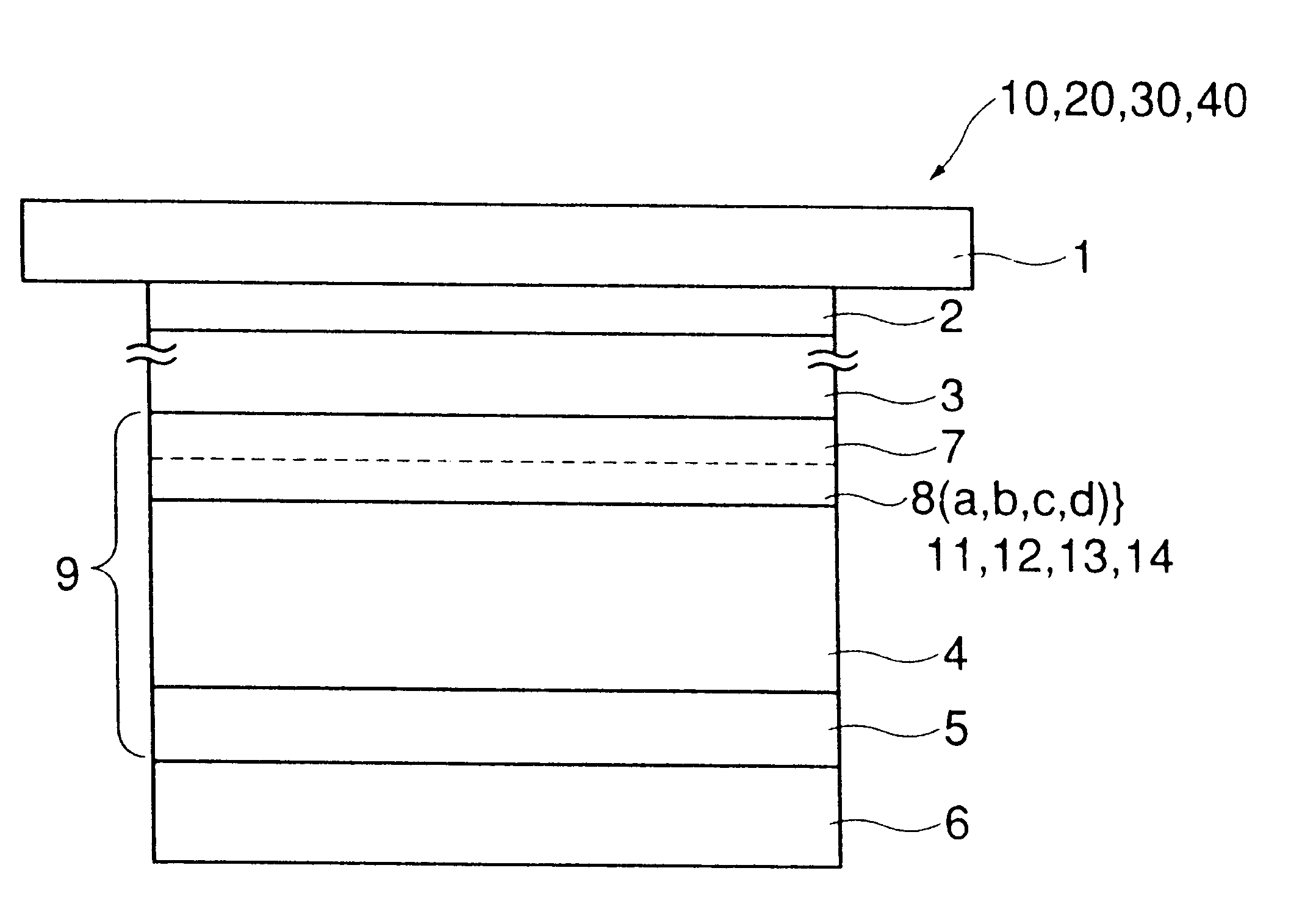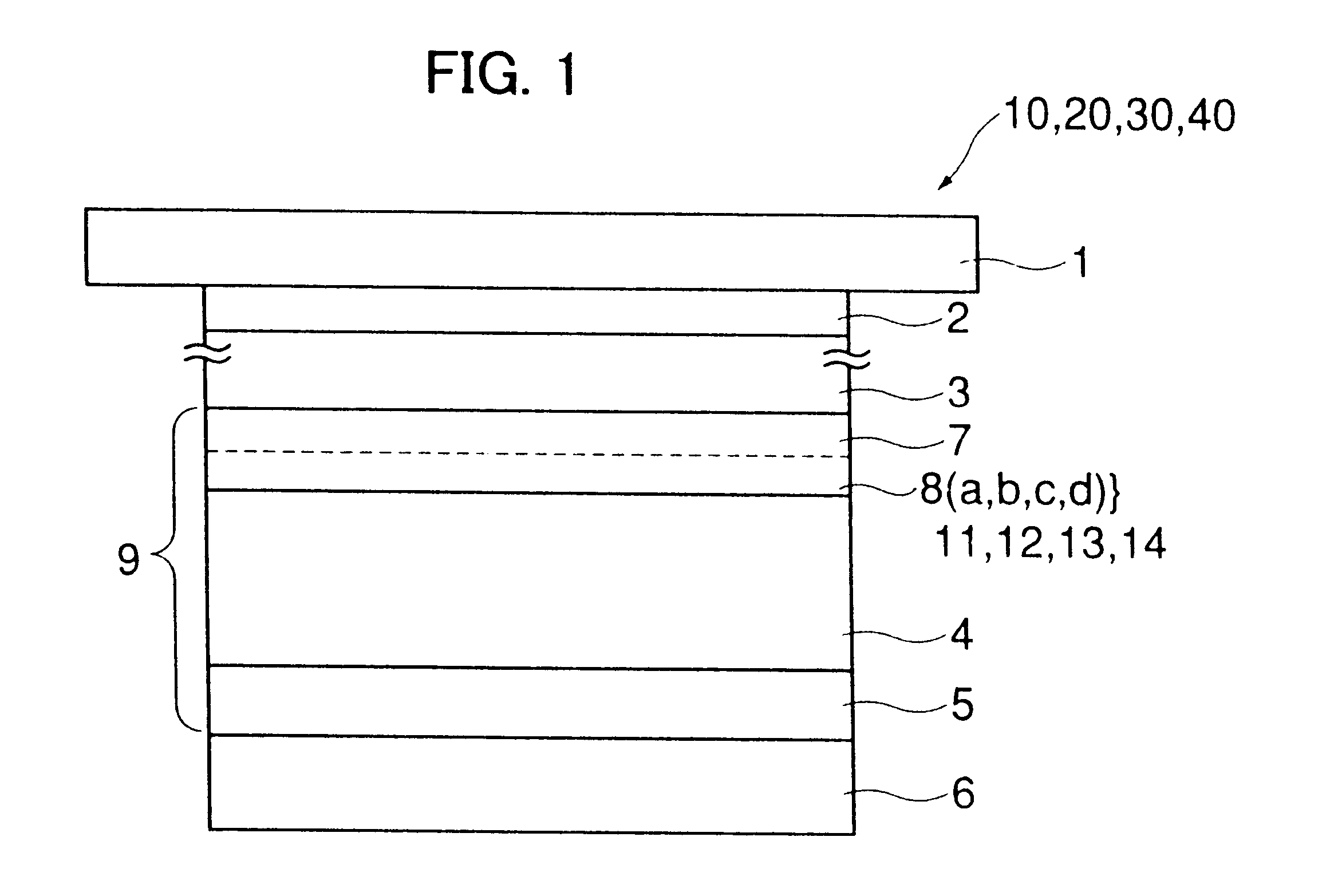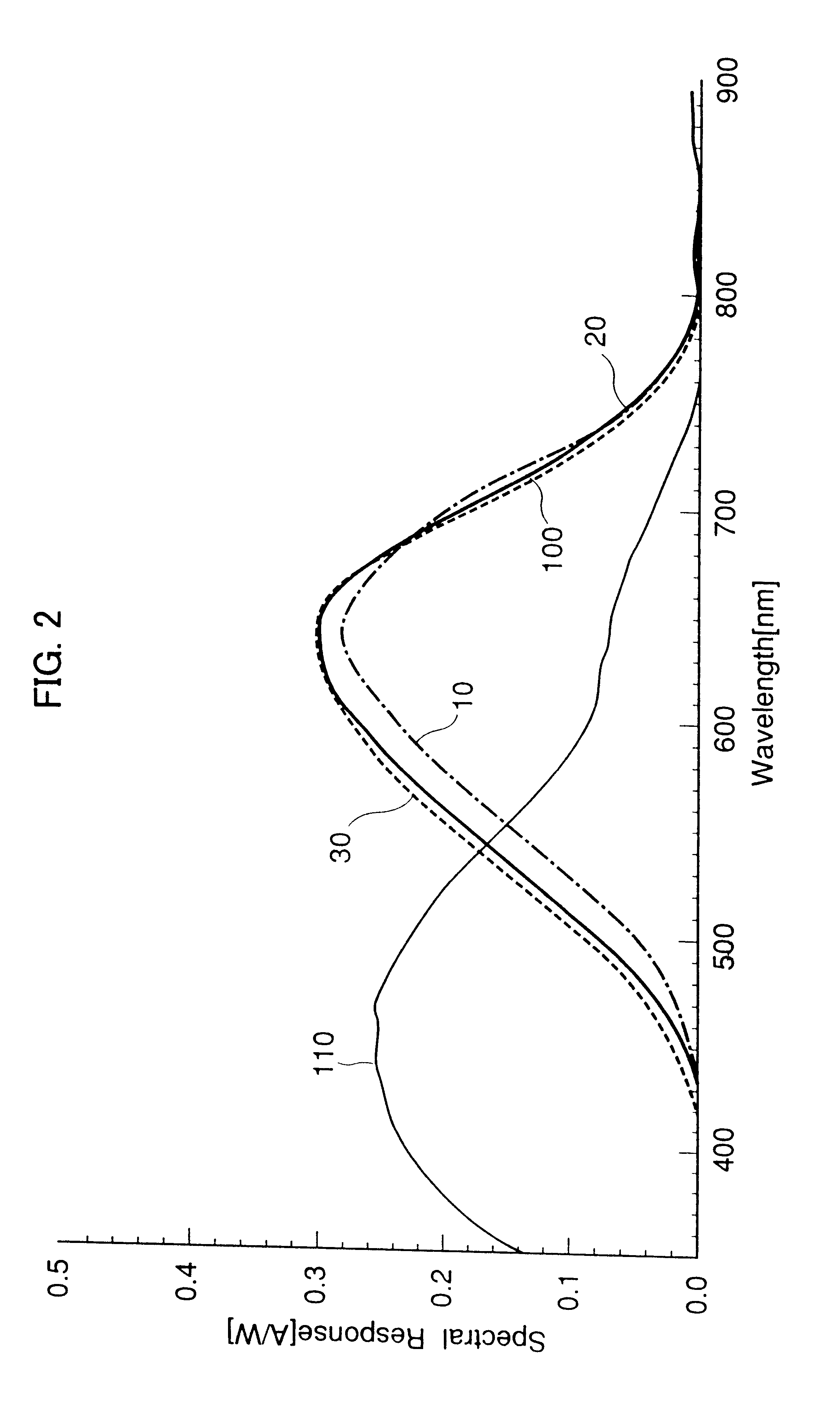Method for manufacturing photoelectric conversion device
- Summary
- Abstract
- Description
- Claims
- Application Information
AI Technical Summary
Benefits of technology
Problems solved by technology
Method used
Image
Examples
embodiment 2
In the present embodiment, as shown I FIG. 1, a tandem photoelectric conversion device 20 is provided by forming a transparent electrode layer 2, a first pin junction layer 3, a p-layer 12, an i-layer 4 and an n-layer 5 that comprises a second pin junction layer 9 and a back electrode layer 6 in the order listed on a transparent glass substrate 1. In this example, the p-layer 12 is formed of a first p-layer 7 and a second p-layer 8b, and the second p-layer 8b is formed by a method of manufacture in which a plasma process is performed on the surface of the second p-layer 8b every time it is deposited to a predetermined thickness.
A method for manufacturing the tandem photoelectric conversion device 20 will be described below.
First, an uneven transparent glass substrate 1 with a transparent electrode layer 2 made of ZnO was placed on a substrate supporting body in a p-layer forming chamber of a plasma gas phase film forming apparatus, and a pin junction layer 3 constituted of an a-Si l...
embodiment 3
In the present embodiment, as shown I FIG. 1, a tandem photoelectric conversion device 30 is provided by forming a transparent electrode layer 2, a first pin junction layer 3, a p-layer 13, an i-layer 4 and an n-layer 5 that comprise a second pin junction layer 9 and a back electrode layer 6 in the order listed on a transparent glass substrate 1. In this example, the p-layer 13 is formed of a first p-layer 7 and a second p-layer 8c. The second p-layer 8c is formed by a method of manufacture in which a plasma process is performed on the surface of the second p-layer 8c for a plasma irradiation time and / or with reduced processing power each time the second p-layer 8c of a predetermined thickness is obtained.
A method for manufacturing the tandem photoelectric conversion device 30 will be described below.
First, an uneven transparent glass substrate 1 with a transparent electrode layer 2 made of ZnO was placed on a substrate supporting body in a p-layer forming chamber of a plasma gas ph...
embodiment 4
In the present embodiment, as shown I FIG. 1, a tandem photoelectric conversion device 40 is provided by forming a transparent electrode layer 2, a first pin junction layer 3, a p-layer 14, an i-layer 4 and an n-layer 5 that comprise a second pin junction layer 9 and a back electrode layer 6 in the order listed on a transparent glass substrate 1. In this example, the player 14 is formed of a first p-layer 7 and a second p-layer 8d. The second p-layer 8d is formed by a method of manufacture in which a plasma process is performed on the surface of the first p-layer 7 after the first p-layer 7 is formed.
A method for manufacturing the tandem photoelectric conversion device 40 will be described below.
First, an uneven transparent glass substrate 1 with a transparent electrode layer 2 made of ZnO was placed on a substrate supporting body in a p-layer forming chamber of a plasma gas phase film forming apparatus, and a pin junction layer 3 made of a-Si was fabricated on the substrate 1. A ma...
PUM
 Login to View More
Login to View More Abstract
Description
Claims
Application Information
 Login to View More
Login to View More - R&D
- Intellectual Property
- Life Sciences
- Materials
- Tech Scout
- Unparalleled Data Quality
- Higher Quality Content
- 60% Fewer Hallucinations
Browse by: Latest US Patents, China's latest patents, Technical Efficacy Thesaurus, Application Domain, Technology Topic, Popular Technical Reports.
© 2025 PatSnap. All rights reserved.Legal|Privacy policy|Modern Slavery Act Transparency Statement|Sitemap|About US| Contact US: help@patsnap.com



